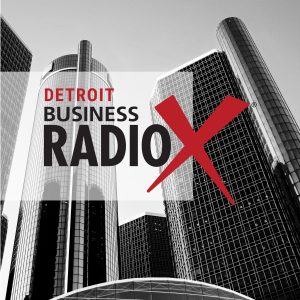On today’s Women in Motion, Lee Kantor is joined by Tracy Lawson from Lawson and Associates and the Safety Intelligence Institute. Tracy discusses her company’s role in providing safety support services across various industries, including construction, general industry, and maritime. She shares her journey from military service to joining her family’s construction business and emphasizes the importance of integrating safety into all business operations. Tracy highlights the benefits of proactive safety management and the value of leadership and communication.
 Tracy Lawson has 30+ years’ experience in the occupational safety & health field. Tracy has a Bachelor of Science in Occupational Safety and Health and maintains several board certifications. In 2009, Tracy opened Lawson & Associates, a certified VOSB, VBE, WOSB, WBE and State of Hawaii DOT DBE/SBE specializing in safety support services. In 2020, Tracy and Nalani Jenkins co-founded the Safety Intelligence Institute.
Tracy Lawson has 30+ years’ experience in the occupational safety & health field. Tracy has a Bachelor of Science in Occupational Safety and Health and maintains several board certifications. In 2009, Tracy opened Lawson & Associates, a certified VOSB, VBE, WOSB, WBE and State of Hawaii DOT DBE/SBE specializing in safety support services. In 2020, Tracy and Nalani Jenkins co-founded the Safety Intelligence Institute.
Tracy is the 2021 Pacific Business News Business Leader of the Year – Small Business, 2020 Pacific Edge Magazine Businesswoman of the Year, 2019 BBB Torch Award for Ethics Honolulu (Tier 2) recipient and SBA Person of the Year for the County of Honolulu, 2015 PBN Small Business Leadership Hawaii Award recipient and finalist for the PBN Women Who Mean Business Award, 2010 Honor Alumni of the Honolulu Community College OSH Program, 2003 PBN Top 40 Under Forty business professional and American Society of Safety Engineers Hawaii Chapter Safety Professional of the Year. 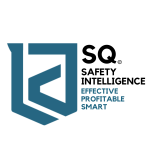
Tracy’s experience ranges from being a U.S. Army Military Police Corps Traffic Accident Investigator, a construction small business Safety Director, a Vice President of a national general contractor and a business owner.
In 2002 her program was recognized as one of America’s 17 Safest Companies in the October 2002 Occupational Hazards Magazine, was the recipient of the 2001 AGC of America National Construction Safety Excellence Grand Award and First Place in Building for 500,000 + man-hours and contributed to winning the 2000 USACE Worldwide Contractor of the Year.
Connect with Tracy on LinkedIn.
Music Provided by M PATH MUSIC
![]() This transcript is machine transcribed by Sonix
This transcript is machine transcribed by Sonix
TRANSCRIPT
Intro: Broadcasting live from the Business RadioX Studios, it’s time for Women In Motion. Brought to you by WBEC-West. Join forces. Succeed together. Now, here’s your host.
Lee Kantor: Lee Kantor here, another episode of Women In Motion and this is going to be a good one. But before we get started, it’s important to recognize our sponsor, WBEC-West. Without them, we couldn’t be sharing these important stories. Today on Women In Motion is Tracy Lawson. She is with Lawson & Associates and the Safety Intelligence Institute. Welcome, Tracy.
Tracy Lawson: Hi. Good morning. Aloha.
Lee Kantor: Aloha. So, before we get into things, tell us about Lawson & Associates and the Safety Intelligence Institute. How are you serving folks?
Tracy Lawson: Well, we are a safety support services firm. We are not consultants. And so, we work in the occupational safety and health field in all industries, whether it’s construction, general industry, maritime. And our focus is to help companies stay out of business and learn how to be productive and safe at the same time.
Lee Kantor: So, how did this come about? What is your journey? How did you get involved in this line of work?
Tracy Lawson: Well, it’s kind of a crazy journey. Out of high school, I joined the Army and I was a military police traffic accident investigator and saw a lot of stuff. And when I got out of the Military after Desert Shield/Desert Storm time, I joined my family’s construction company. My dad was a contractor and developer. And probably the first three months in business, we got a visit from our insurance company and they said your rates for accidents are so bad that we’re not going to cover you anymore if you don’t do something drastic. And I told my father about it and he said, “Well, you are law enforcement, go do something about it.” And that’s kind of how I fell into the industry.
Tracy Lawson: And I found out pretty soon that it’s not about following rules. It’s actually about managing your business really well and planning ahead to do the job the right way, the first time, the safe way. And I’ve been very fortunate to have some really great success throughout my career. And we just try and share that information with other businesses and help change their perspective about not having to choose between safety and production.
Lee Kantor: Now, are there certain industries or niches that your work focuses in on?
Tracy Lawson: Well, definitely. I mean, we work in all industries, especially construction. I think I just have a heart for that coming from, you know, a construction family. And there’s so many things that change on a daily basis. It’s dynamic. It’s constant challenges. And I enjoyed a lot. In fact, some of the smartest, most innovative people I’ve ever met work in construction and they just have to use that power of innovation for safe production, not the other way around.
Lee Kantor: Now, when organizations contact you, is it proactively or is it kind of after something happened, they’re like, “Oh. We need to fix that so that doesn’t happen again”?
Tracy Lawson: That’s a great question, Lee. Actually both, it just depends on the organization and kind of their, I think, maturity and understanding of how safety can help their business. So, often we get people calling us saying we want to have you come evaluate how we’re doing with our own in-house safety department and do some independent audits or help us put in place a safety management system versus just safety programs. And of course, we get phone calls saying I just got inspected or we’ve just had a serious incident or a lawsuit, can you help us? And so, we’re happy to help both circumstances, of course we prefer to be proactive if possible. But we’re here to do whatever we can to help our industry make sure we provide safe workplaces for everybody so they can go home to their families.
Lee Kantor: Now, is there any advice or any low hanging fruit for organizations that they can implement that maybe is obvious to you but maybe not so obvious to them?
Tracy Lawson: Yeah. I think the first thing is really understanding what laws apply to you and figuring out the perspective how the law and the regulators view your decisions versus how you personally would view them. That’s a big gap we see with organizations. And leadership, making sure leadership understands and has a good foundation of safety knowledge to be able to value – basically a lot of times, you’re paying for training and staffing or programmatic elements, that if they work, you won’t see something go wrong, and that can be kind of counterintuitive sometimes.
Tracy Lawson: And as far as low hanging fruit, it’s all over the place. You know, the obvious going to the OSHA website and looking at what are the top citations issued for the year prior, and going back and checking your house and making sure that you’re a business house. And making sure that is our hazard communication program in place. Do we actually have good value added training taking place that’s resulting in changes in behavior, not just checking a box that we did a class? Or do I actually have the written programmatic elements that I need and do they integrate into all the operational elements in our business?
Tracy Lawson: So, there’s a lot of requirements that need to be made and just taking one at a time and looking at them through a different lens of somebody else’s perspective. Everybody thinks that we have reasons why we do something or don’t do something, but look at it from a regulator’s perspective and see if that can help identify things that you could change or do better. And we tell people this can be overwhelming sometimes, especially if you have nothing or you’re in a bit of a situation with the regulatory agencies.
Tracy Lawson: But we encourage people, you know, do 5 percent better every day. Just pick one thing, do 5 percent better every day, and just chip away at it so that, eventually, you’re moving forward, you’re gaining traction, and you’re changing your culture and putting the elements that are necessary in place.
Lee Kantor: Now, can you explain kind of the pros and cons of hiring somebody, an outsourced solution to this rather than just saying, “Oh, I’m just going to give that to Bill and Bill will figure it out.” You know, somebody on the team already and just add this to the pile of stuff that person has to do.
Tracy Lawson: A lot of times people think that they’ve got someone who may be interested or could handle an extra workload, and I advise against that. First of all, Bill may not be interested and really know what he’s getting himself into. And this is a scientific profession. It’s a subset of engineering. And so, there’s a knowledge base that needs to be there. And, really, for in-house professionals, they need support too.
Tracy Lawson: And what we often hear from clients who come to us to help them staff or mentor their safety staff in-house is most business owners don’t have any idea what their safety person is supposed to be doing, if they’re doing it well or if they’re doing the right things. And that’s where we can come in and help from all different aspects.
Tracy Lawson: It can be much more cost effective to hire a third party like us to come in and maybe staff a construction site. When that project’s done, then we go away. Or come in and help coach and set up and put in place your company program and teach your leadership what are the things they do on a daily basis to support those programs. It’s a tell when we see that companies are going to give safety to their administrative assistant or some other manager who they’re probably already overwhelmed with the amount of work they’re doing in the first place.
Tracy Lawson: And to think that it could be so simple to just put a plan on paper and there we go and we’re good. There’s so much more to it. And it really takes someone with good leadership, well-rounded ability to communicate in writing and verbally. And it takes somebody who has the passion and desire and understands the value that this can bring to an organization to work through things that can be challenging.
Tracy Lawson: So, we’d love to talk to companies about the pros and cons of in-house versus hiring externally and, of course, we encourage folks to take a look at both sides and see what works best. It’s a pretty tight market right now. And, you know, I think with all professions, there’s a difference between people who are professionals in the industry and people who are practitioners, I’ll say.
Lee Kantor: And I think it goes to your point about this is a leadership kind of marker here. It’s about the culture, how important really are your people. This doesn’t have to be an administrative expense. This is something that could kind of impact your company in a lot of ways if you do this right and it’s more of an investment than it is an expense.
Tracy Lawson: Absolutely. You know, short story, I just did a safety leadership class for an executive group. There’s probably ten executive leaders within this very large organization. And we have a full day safety leadership course and then we do a workshop at the end identifying what does the ideal safety management system in our organization look like after we’ve created a good foundation through training of what is culture, what is the true cost of safety, what are the legal implications, and just looking at safety from a little bit different perspective from a business lens. And we always talk about culture and how culture is so much more important than any policies and procedures and strategies that you may have as an organization.
Tracy Lawson: And after that meeting, I had a bunch of executives walk in, kind of like, “What am I doing here wasting my day? I’ve got other things to do.” And by the first hour, they were surprised and engaged and actively participating to create what the future of their organization’s program looked like through their leadership.
Tracy Lawson: And so much so that shortly thereafter, one of the senior vice-presidents from a whole division came back and said I want to do this training for my leaders and my division because this isn’t just about safety. The things you talk about translate into production and quality, and they are big picture leadership issues that all my supervisors and managers need to know about. So, you’re spot on that this truly begins as a pure business leadership people leading issue.
Lee Kantor: Now, you’ve used the phrases safety management system, safety program, can you explain the difference between both of those, because one sounds more systemic and one sounds more administrative?
Tracy Lawson: Well, unfortunately, both have administration that has to be done. We live in a society where – somebody said this to me the other day – if it isn’t on paper, it’s vapor. And I said, “Well, that’s so good.” I used to say if it isn’t written down, it didn’t happen.
Tracy Lawson: But the biggest and the easiest way I can identify the difference between a safety management system and then an organization just running on safety programs is this, safety programs are just a bunch of different parts and pieces, not necessarily interacting effectively with one another. You go implement a fall protection policy, you go implement your scaffolding policy, and you go implement your personal protective equipment policy, and all three of those were written in a vacuum, standing alone and not looking at how they interface with one another, and certainly not taking into account how that impacts or interfaces with the activity and the operational element.
Tracy Lawson: Where a safety management system interacts with all the core business elements from estimating, if that’s what your company does, or procurement of materials and tools and equipment to marketing, to accounting, to human resources, to your production element, your operational element of how the work that you do gets done, to how we evaluate how effective was that. And even instead of incident investigation, using learning teams to be able to take people from each group and look at an incident and say how can we learn from that with different perspectives, and also what’s working well in our business, and how do we replicate that.
Tracy Lawson: And so, a safety management system is just like you said, the interaction of safety with all the parts of the business that help it be systemic, help it drive culture, and help the business be more effective and doing the job the right way and the first time, the safe way, and preserving our most important resource, which is people, and the intellectual property that they have, and the ways that they contribute to our business versus somebody going out and trying to just implement parts and pieces that don’t necessarily fit nicely together.
Lee Kantor: Now, can you explain why it was important for your organization to become part of WBEC-West? What were you hoping to get out of it and what have you gotten out of it?
Tracy Lawson: Well, I think it’s important to join like-minded people. And when we look at women-owned businesses, especially for us, we work in construction, we work in maritime, and we do a lot of other general industry work that’s a variety from warehousing to schools, to hotels, to telescope organizations, you name it, it’s a wide variety, it’s important to be able to connect with organizations that help understand and want to understand what we do, and promote the business that we do, and see the value in even having the opportunity to talk on this podcast about safety and health.
Tracy Lawson: So, WBENC has been great for us from that aspect. And it’s wonderful to be a part of an organization that’s trying to lift up businesses and help us to be competitive and successful and to learn from one another.
Lee Kantor: Now, can you share who your ideal client or referral partner is and maybe we’ll be able to help you connect with more of them?
Tracy Lawson: Sure. Well, our ideal client, first of all, is an organization that either knows what they don’t know and needs help or values safety and health in terms of how it can make their business more efficient. They realize safety doesn’t have to slow them down. They don’t have to choose between, you know, making their dollars and getting their productivity done versus saving their employees. That’s the first thing.
Tracy Lawson: And, you know, we’re looking for businesses who see a value proposition and understand how it can help level their organizations up. That’s really our broad brush criteria of what we’re looking for, who wants our help and will allow us to come in and work with them to make improvements. And so, that’s what we’re looking for, organizations that either want to know more and learn and want to know better and do better.
Lee Kantor: Now, is your work primarily in Hawaii or you do the Mainland as well?
Tracy Lawson: Primarily in Hawaii, however I have worked across the whole U.S. And I am not opposed to coming out and helping organizations that are ideal clients who really want to learn and level up and do better. So, physically and geographically, of course, we’re located here in in Honolulu. We work on all of our neighbor islands. But we’ve done work in Micronesia, we’ve done work across the whole U.S. And so, we just take it on a case by case basis.
Tracy Lawson: We’re very open to helping organizations that are interested. Safety Intelligence Institute is the training institute and we’re global with that. We’ve had people from the Continental United States, Bahrain, Wake Island, Guam, Alaska, everywhere participating in our classes, which we really focus on competent person level training and teaching people not just here’s what the rule says, but what does this look like for me when I implement it in my workplace, and what are some strategies I can use to be successful, and just a little bit of a change in perspective about how that applies to them, how it affects them, and how it can make them and their business better.
Lee Kantor: Now, if somebody wants to learn more and have a more substantive conversation with you or somebody on the team, what are the websites?
Tracy Lawson: They can go to lawsonsafety.com or safetyintelligenceinstitute.com. Lawson Safety, there’s a contact us point, they can sign up to be on our email blasts and they can reach out to us directly. It’ll come straight to me. And then, we’re happy to reach out and have a conversation.
Lee Kantor: Well, Tracy, thank you so much for sharing your story today. You’re doing such important work and we appreciate you.
Tracy Lawson: Well, thank you, Lee. I really appreciate the opportunity. And I appreciate what the organization, WBENC, is doing for all the women and our women-owned businesses.
Lee Kantor: All right. This is Lee Kantor. We’ll see you all next time on Women In Motion.

 Don Grier is a seasoned IT project and quality assurance director with over 30 years of experience delivering innovative and impactful solutions for diverse clients and industries.
Don Grier is a seasoned IT project and quality assurance director with over 30 years of experience delivering innovative and impactful solutions for diverse clients and industries.
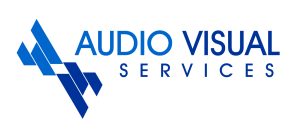
 Heather Bailey is the founder of
Heather Bailey is the founder of  Lee Kantor founded
Lee Kantor founded  Rachel Simon is the CEO & Founder of
Rachel Simon is the CEO & Founder of 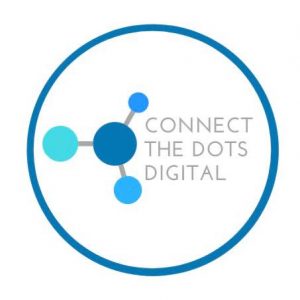

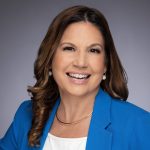 Sarah Kalicki-Nakamura, co-owner of
Sarah Kalicki-Nakamura, co-owner of 







